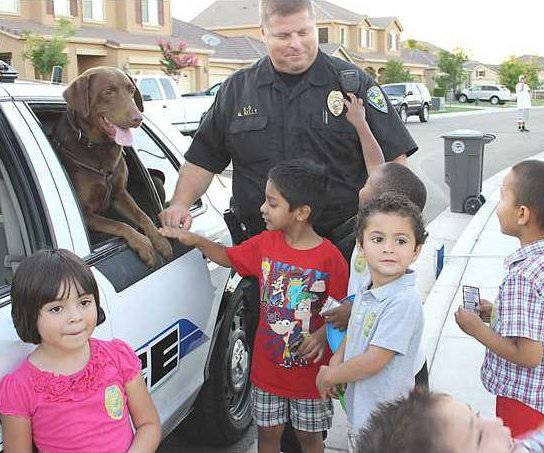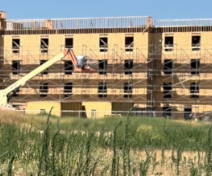The days of playground equipment being made of unforgiven metal with slides capable of giving users borderline first degree burns on a hot summer day are long gone.
And while the generations of replacement equipment minimizes metal though the use of plastic, wood and rubber are a significant upgrade they can still be uninviting for children with autism and related childhood issues.
Kids with autism was the driving force behind Manteca Councilman Mike Morowit’s decision to earmark a portion of the $450,000 each council member had the opportunity to designate in remaining federal COVID relief funds on one-time projects to enhance the commodity’s quality of life for an inclusive or sensory playground.
A sensory playground that is in the process of moving forward for placement at Northgate Park isn’t the only inclusionary policy initiatives being undertaken by the city.
Last month, the Manteca Police Department became one of three law enforcement agencies in the state to attain Certified Autism Center status.
It was part of what Morowit described as “the forward thinking” of Police Chief Stephen Schluer and the department’s command structure to help make sure police interactions with those who are autistic have positive outcomes.
“Every resident should feel comfortable to be here in the community regardless of religion, creed, or anything,” Morowit noted. “Parks are part of that.”
Morowit has noted the placement in an established part of Manteca allows for what is considered a growing best practice for playground equipment to be accessed in areas that aren’t newly developed.
The city has indicated a greater variety of recreational options will continue to be bult into new neighborhood parks as they are developed which could include a sensory playground as well at a future location.
The Northgate playground is not just for those children with autism and such but for all kids.
At the same time by definition, all existing playgrounds have sensory components.
Not only does a sensory playground per se take that to the next level, but it is installed in such a manner to allow easier access such as for kids in wheelchairs.
A sensory playground is one that incorporates sensory elements. It might have textured panels they can touch and feel or visual panels that make the light dance and flicker.
Sensory playgrounds offer a unique way to explore the senses. They’re usually bigger than other types of sensory play.
Technically, any playground can provide children with certain sensory experiences, but a truly sensory-friendly playground is designed to create a nurturing and inclusive environment for children of varying abilities.
Specifically, a sensory-friendly playground offers a variety of equipment designed to stimulate the senses, including sight, sound, smell, touch, balance and proprioception.
Sensory playgrounds are often referred to as “inclusive playgrounds,” but the two aren’t always the same.
An inclusive playground goes beyond the accessibility standards of the Americans With Disabilities Act (ADA).
It offers more than basic wheelchair access and provides a space for kids of all ages and ability levels to play, challenge and have fun together.
An inclusive playground will typically include these features:
*Surfaces that are easy to move around on, even when using a wheelchair or other mobility device.
*Inclusive equipment, such as swings with harnesses that accommodate kids of all ability levels
*Play equipment that can be used in a variety of ways, depending on a child’s age, abilities and imagination.
*Wide pathways between pieces of equipment to allow for ease of navigation between spaces, either on foot or with a wheelchair.
To contact Dennis Wyatt email dwyatt@mantecabulletin.com






